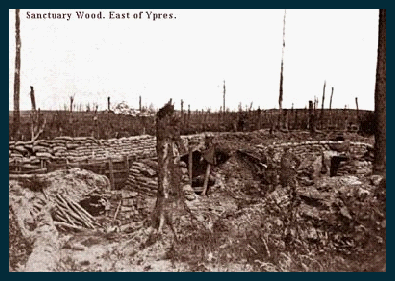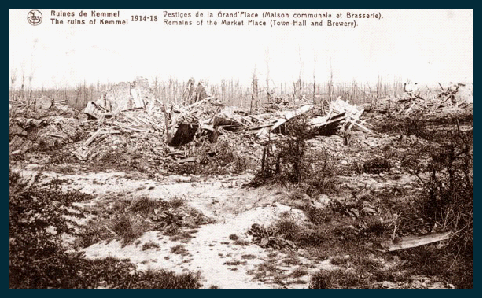Copyright © All rights reserved.



Ernest Hodgson

Ernest Hodgson was born in September 1892 in Norton and his birth registered in the last quarter of that year in Malton. He was the second son of Thomas and Annie Maria (nee Barker) Hodgson who married in the Malton area in the first quarter of 1892.
In 1901 Thomas , a platelayer ( maintaining the permanent way on the railway) was living at New Cut Cottages in Huttons Ambo with his wife Annie Marie and their five children.
1901 census – resident at New Cut Cottages, Huttons Ambo
HODGSON, Thomas, Head, Married, M, 33, Railway Platelayer, Norton Malton Yorkshire,
HODGSON, Annie M, Wife, Married, F, 32, , West Heslerton Yorkshire,
HODGSON, William, Son, Single, M, 9, , Norton Malton Yorkshire,
HODGSON, Ernest, Son, Single, M, 8, , Norton Malton Yorkshire,
HODGSON, Thomas W, Son, Single, M, 7, , Norton Malton Yorkshire,
HODGSON, Harry W, Son, Single, M, 6, , Norton Malton Yorkshire,
HODGSON, Florence M, Daughter, Single, F, 4, , New Cutt Malton Yorkshire
By 1911 all the children were still at home, but now out at work, learning a variety of trades – Ernest was working as a butcher, apprenticed to Mr Blanchard at 8 Old Maltongate.
1911 census – resident at 3 New Cut Cottages, Huttons Ambo
HODGSON, Thomas, Head, Married, M, 44, Platelayer, Norton Yorkshire,
HODGSON, Annie Maria, Wife, Married 19 years, F, 43, , West Heslerton Yorkshire,
HODGSON, William, Son, Single, M, 19, Apprentice Plumber, Norton Yorkshire,
HODGSON, Ernest, Son, Single, M, 18, Assistant Butcher, Norton Yorkshire,
HODGSON, Thomas Wilfrid, Son, Single, M, 17, Apprentice Bricklayer, Norton Yorkshire,
HODGSON, Harry Walter, Son, Single, M, 16, Apprentice Joiner, Norton Yorkshire,
HODGSON, Florence Mary, Daughter, , F, 14, Nurse Domestic, New Cut Yorkshire,
By 1913 Ernest was working as a farm servant and, on 20th February, he enlisted for a year’s service in the Army Reserve with the Army Service Corps. His medical examination shows him to have been 5’7” in height, weighing 11 stone, with dark hair, hazel eyes and a scar on his left cheek. This document also records his religion as Church of England and the church war memorial records that he was a chorister at St Leonard’s Church. On the same date of 1914 he was working as a wagoner and his service was renewed in the Reserve.
During May the Battalion saw frontline service at Sanctuary Wood, and from June to November were fighting in the area around Armentieres.
In December they returned to the Ypres area and were based at Railway Dugouts near Poperinghe. Here they continued to see heavy action until April 1916 when they were marched south west to the area near Kemmel where once again they found themselves supporting Canadian forces. Here they remained until August when they were marched to the railhead and sent to Millencourt in the Somme area.
On the 9th September the Battalion left Millencourt for the Trenches in front of Bazentin Le Petit where the Battle of the Somme had been raging since the 1st July and on the 15th September the Battle of Flers-

On 6th August he was mobilised on the outbreak of war but on the 19th August he was discharged with a good character, having been found medically unfit for further military duties.
By April 1915 he had managed to convince the authorities of his fitness and joined up with the 5th Battalion of the Yorkshire Regiment and went out to France with the first batch from that Battalion arriving at Boulogne on H.M. Transport “Onward” on 18th April. Ordered to the Ypres Salient to re-


On 4th May when they had been withdrawn to billets in Steenvoorde they were addressed by Field Marshall Sir John French –"I have come here this morning to express to every single Officer and man how much I admire the splendid behaviour of the Battalion in the fighting which has gone on during the last ten days. The 5th Yorkshire Regiment has suffered heavily. You have had one Officer killed, one Officer wounded, twenty eight men killed and one one hundred and five men wounded.
When you came out here you were called upon very hurriedly and you had very little preparation. Things do come that way, very suddenly, in War. The call came through of the disgraceful conduct [gas] of the people who are fighting us, who call themselves soldiers, but who behave in a very unsoldierlike way. In the circumstances we could not wait and had to do the best we could. I do not want to go into details of that fight, because there were other British soldiers engaged. I want particularly to talk of the splendid conduct of the men of the 50th Northumbrian Division, and especially of your Battalion. I wish to compliment every one of you. I am very grateful to you, for all you have done. I think your conduct magnificent.”
On the 23rd September 1916 at 9.00 pm C Coy moved to Starfish Line at disposal of 5th Durham Light Infantry and D Coy moved to Sunken Road. A and B Coys to Hook Trench. HQ remained in Swansea Trench. The next day they remained in the same positions. Five men were killed that day including Ernest Hodgson who was serving as a stretcher-
Ernest was buried by his comrades (according to a letter from 2nd Lieutenant T.H. Grant to his parents) but as often happened, the grave was lost as the area continued to be destroyed by warfare and he is commemorated on the Thiepval Memorial.
